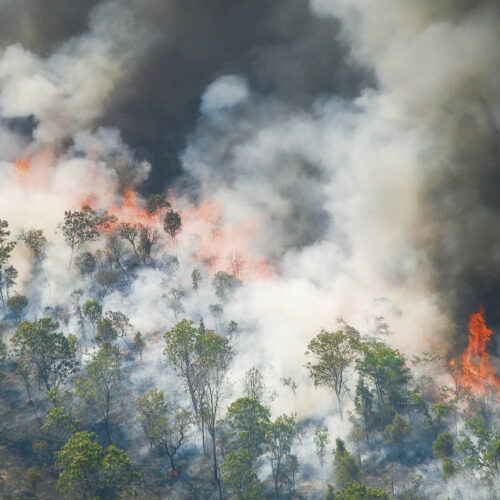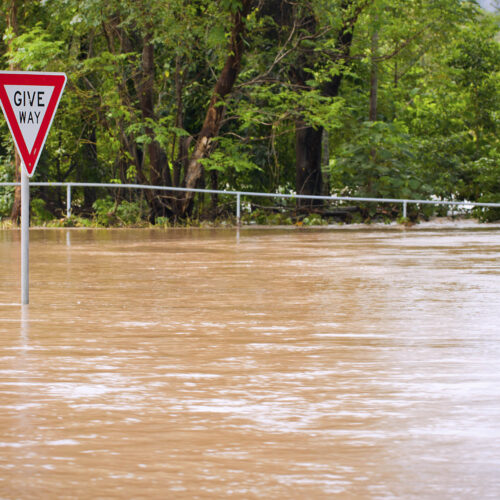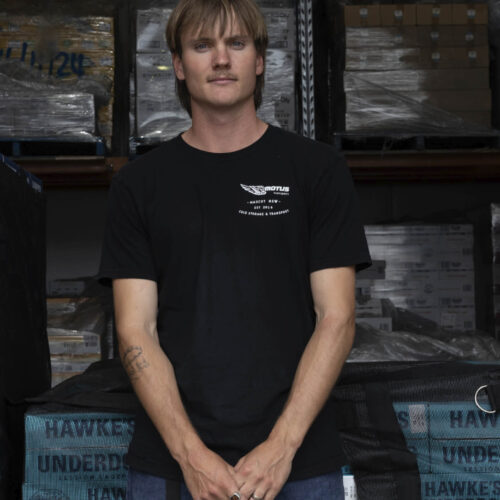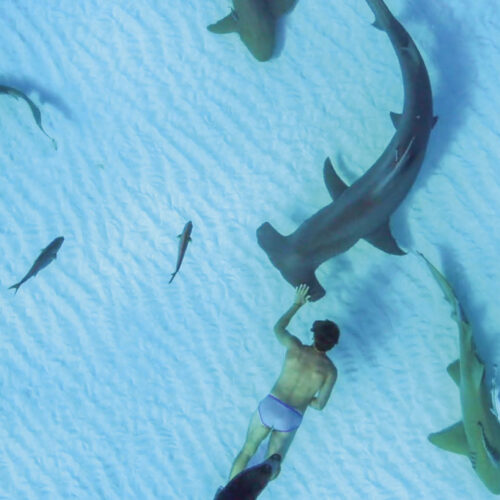Top of the class
2012-08-07T10:59:03+10:00
A small Victorian primary school has earned top marks with an inspiring environmental program, including natural wetlands, energy saving, permaculture gardens, chooks and more. PENNY WOODWARD reports. The world is not given by your parents but borrowed from your children. A shining example of this can be found at a primary school in the small rural Victorian town of Balnarring.
Above: Dip-netting for water creatures.
To slightly misquote the naturalist J.J. Audubon: A true conservationist is one who knows that the world is not given by your parents but borrowed from your children. A shining example of this can be found at a primary school in the small rural Victorian town of Balnarring.
Balnarring Primary School, with 367 students, was opened in 1990. Three years later the school community started establishing a wetlands and flora and fauna reserve. From what was virtually a bare paddock, by dint of sheer hard work, creative fundraising and talented grant applications, in 1995 the Balbirooroo (an Aboriginal word meaning ‘ibis’) wetlands were officially opened. More indigenous vegetation was planted, paths built and interpretive signs erected, and within a few years it was an extensive, naturally functioning wetland ecosystem with an associated woodland. The wetlands quickly became an integral part of the school curriculum and a valuable resource for the community. But this was only the beginning. In 1998 an ephemeral wetland was constructed with associated plantings and drains with riffles to slow water movement.
My children were lucky enough to be at the school for a few years during this time and I saw firsthand the joy they experienced in dip-netting the wetlands and identifying the water creatures. They also experienced how much work goes into planting new areas and especially how hard it is to dig the bulbous weed wild watsonia from roadside verges!
Other initiatives based around the wetlands included a Wetlands Activity Book, projects with the local Boonerwrung Aboriginal people (including children’s books based on their stories) and a Ranger in Residence program. The school also joined Melbourne Water’s Waterwatch and Frog Watch programs.
By 2006 the school had won the first of many awards for its work in habitat creation and restoration
Pea Saunders, the Sustainability and Wetlands co-ordinator, says the wetlands teach the children about the rich biodiversity of the area. “They also develop practical skills in how to enjoy and care for our wetlands,” she says, as well as being able to “let their sense of questioning and curiosity run wild”.
Left: Pea Saunders in the vegie garden.
Five-star eco goal
After the wetlands, attention was turned to improving the school’s other sustainability credentials. The first step was to install two rainwater tanks that provided all the water for the school toilets and evaporative air conditioners. This, combined with water efficiency initiatives such as locating and fixing leaks, cutting out lawn watering and introducing tap timers led to a 92 per cent reduction in water use.
While continuing to maintain the wetlands and associated infrastructure, Balnarring Primary school and its community joined the Sustainable Schools program. Their ambition was to become a five-star eco-school.
Along the way, they also purchased (through fundraising and grants) binoculars, a telescope, refurbished a donated room as a science room and introduced children more intimately to native fauna by purchasing and housing green tree frogs, blotched blue-tongue lizards and a small python. Money was then found in the school’s budget to employ a part-time science teacher to integrate these resources – a rare thing for primary schools.
Sustainability centre
The biggest project came next – the Sustainability Centre called Bimblemeer, meaning ‘mother earth’ in the Boonerwrung language.
“The construction of Bimblemeer was very much a community thing,” says Saunders. It took two years of grants, fundraising, planning and hard work to get the centre to full operation. There are vegie garden beds for every student grade; living quarters for ducks, chooks, guinea pigs, rabbits and goats; fruit trees and herb beds; pizza oven and chairs.
The oven and chairs were constructed by the students with guidance and help from older students from the nearby secondary school.
Gradually the gardens were planted by the students, and animal residents moved in. Most are permanent, but the goats are on loan from a nearby goat dairy farm. They come as babies and are raised by the children and then returned to the farm at the end of the year.
Left: Kids from the environmental action team with the outdoor pizza oven.
All gardening is based on organic and permaculture principles that focus on the wise use of land, water and vegetation. In the vegetable gardens the students grow all the seasonal vegies, from quick-and-easy radishes to tomatoes, leeks and sweet corn, as well as sprouting broccoli, garlic, pumpkins and more. Also perennials like silverbeet and rhubarb – all mixed in with herbs such as marigolds and basil, as well as plants that attract beneficial insects.
Green waste from the garden, as well as food scraps from classrooms and the staff room, go into the compost to feed the population of eight or more chooks, and into the worm farm. The combined effect of this and other recycling has been to reduce the school’s contribution to landfill by more than 50 per cent.
This resulted in the school winning the Resource Smart Schools 5-Star School Certification, for which it had to demonstrate it had achieved sustainability excellence in energy, water, waste, biodiversity and leadership. To keep up the momentum, members from the school’s Balnarring Environmental Action Team award a sustainability certificate to the best classroom each week.
Community market
Every two weeks there is a community market run by the children. Here they learn about social involvement as well as selling excess vegetables, eggs and worm juice. Most of the money raised goes towards animal feed and running the sustainability centre.
Today, the sustainability centre and the wetlands are used by the children throughout the school week. There are science classes in the wetlands, dip-netting, water sampling, observing wildlife and understanding habitat, as well as growing their own food, cooking it, and caring for farm animals.
The sustainability program is linked to the curriculum through all year levels via an integrated studies program and through a specialist science program. Students, teachers, parents and the wider school community have all shown great commitment to make this happen.
Not only do the students and teachers learn, but through family and friends the wider community also gets involved and makes eco-thinking part of their lives.
In every way this school is an example of nature intersecting with nurture. There is no chance these children will ever suffer from ‘nature-deficit disorder’.
The school has:
- Wetlands, both permanent and ephemeral.
- Dip netting pond, signed interpretive walking trails and bird hide.
- Compost and recycling bins in all class rooms and staff room.
- Water tanks and water efficiency initiatives.
- Solar panels on gym roof and low-energy lights.
- Student monitoring of energy efficiency with awards.
- Worm farm and compost bins in the garden.
- Vegie bed for each class and fruit trees.
- Farm animals including chooks, ducks, goats, guinea pigs and rabbits.
- Native animals.
- Fortnightly market selling excess produce, eggs and worm juice.






